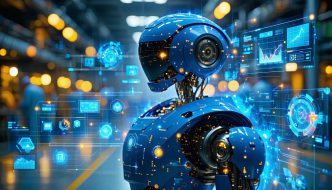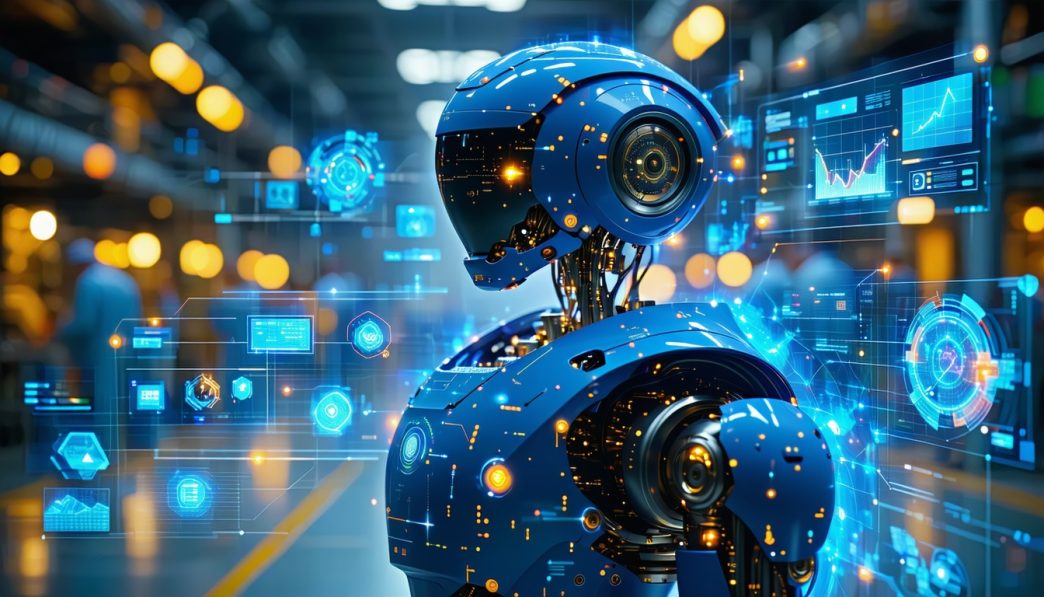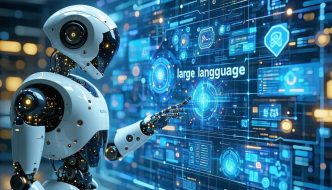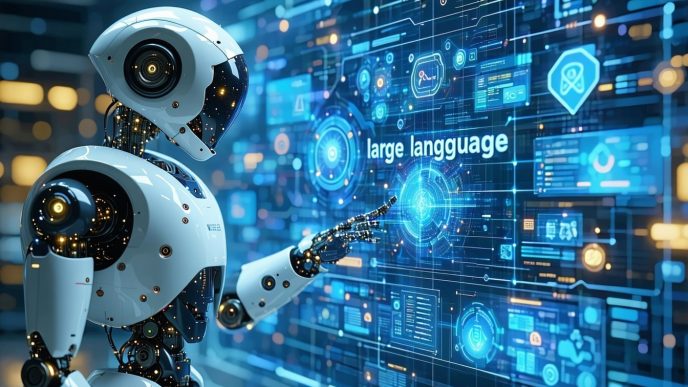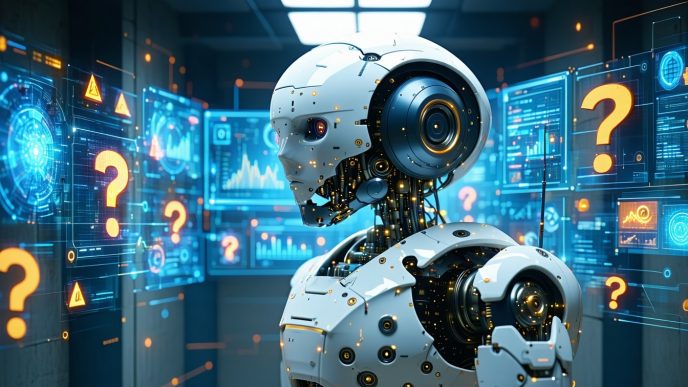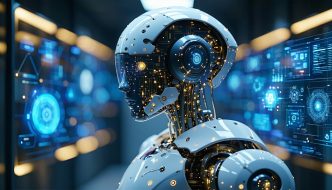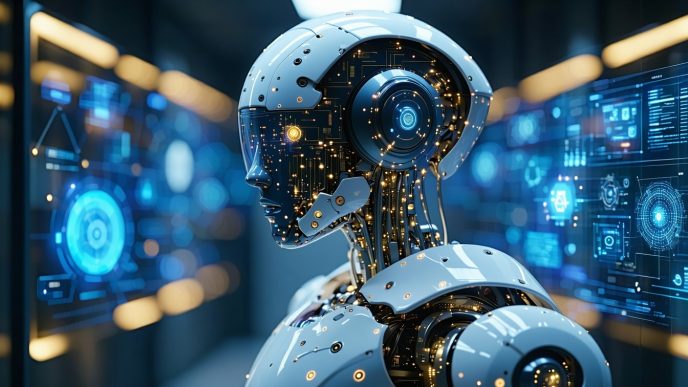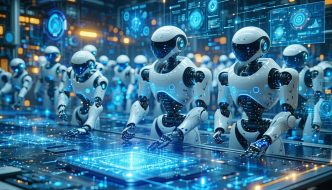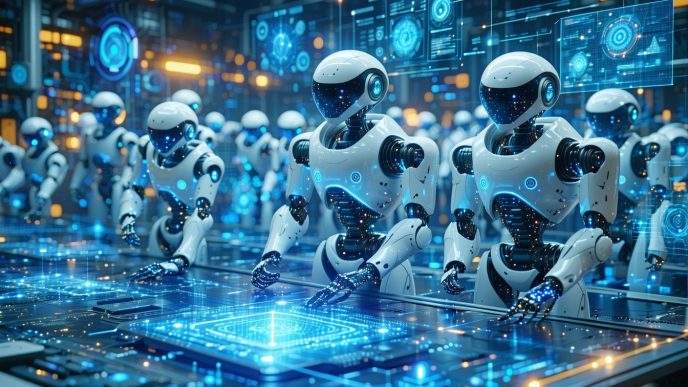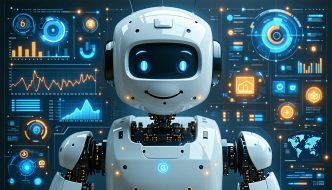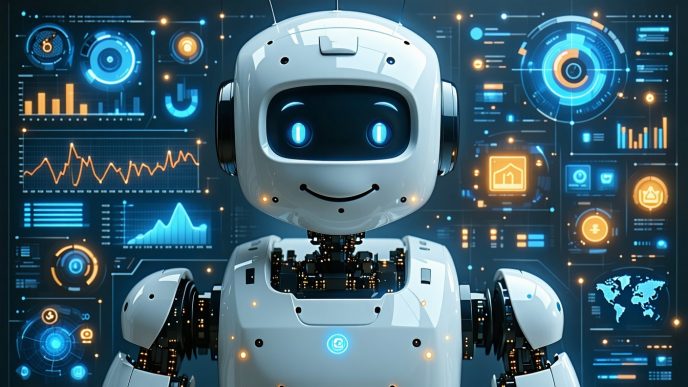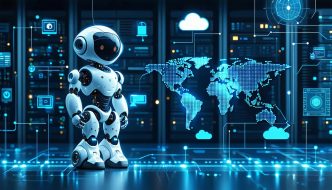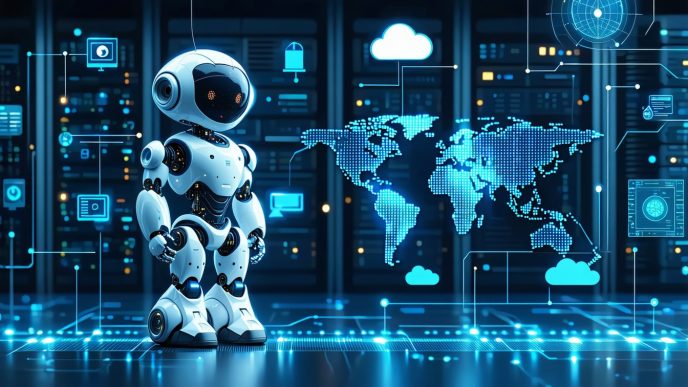Decoding the Minds of Robots
Introduction to How Robots Think
Understanding how robots think involves exploring the underlying principles of artificial intelligence (AI) and the methods they use to interpret information and act accordingly. At the core of many robotic systems is a combination of algorithms, data processing, and sensor integration, which allow robots to perceive their environment and make informed decisions.
Robots utilize various AI techniques, such as machine learning and neural networks, to simulate cognitive functions. This enables them to analyze data, learn from experiences, and perform tasks without human intervention. The systems in place allow for both autonomous and semi-autonomous operations, depending on the complexity of the task.
To illustrate how robots process information, here’s a simplified breakdown:
| Step | Description |
|---|---|
| Data Input | Sensors gather information from the robot’s environment. |
| Data Processing | Algorithms analyze the data to identify patterns and make predictions. |
| Decision Making | The robot determines the best course of action based on its analysis. |
| Action Output | The robot executes the chosen action or response. |
Importance of Real-Time AI Processing
Real-time AI processing in robots is essential for effective decision-making. Unlike traditional computation methods, which may depend on pre-calculated data, real-time processing allows robots to react instantly to changes in their surroundings. This capability is crucial in environments where conditions can change rapidly, such as in search and rescue missions, manufacturing lines, or smart homes.
Real-time AI processing involves several key components:
| Component | Description |
|---|---|
| Sensors | Devices that collect live data about the environment (e.g., cameras, LIDAR). |
| Data Analysis | Techniques that rapidly interpret incoming data to inform decisions. |
| Computational Power | Hardware designed for swift processing and response times. |
| Feedback Loops | Mechanisms that allow robots to adapt their actions based on outcomes and new data. |
With advancements in technologies such as edge AI in robots, robotic systems can process data locally without needing constant communication with a central server. This enhances response times and reliability, particularly in critical applications.
By leveraging real-time AI processing, robots can efficiently handle a variety of tasks while minimizing errors and optimizing performance. This is especially significant in fields like healthcare, where timely interventions can significantly impact patient outcomes, and in robotics applications where precision is vital.
Understanding these foundational concepts sheds light on the intricate ways robots think and operate, making them invaluable tools in modern society. For more detailed insights on the decision-making processes of robots, explore our articles on ai and decision making in robots and robot learning models explained.
Artificial Intelligence in Robotics
Artificial intelligence plays a pivotal role in how robots function, especially when it comes to making decisions in real time. Understanding this complex subject can help clarify how robots adapt to their environments and tackle various tasks efficiently.
Real-Time Decision-Making in Robots
Real-time decision-making refers to a robot’s ability to process information and respond immediately based on that data. This capability is crucial for applications where timing is essential, such as in healthcare or industrial settings.
Robots leverage sensors and onboard processors to gather data about their surroundings, which is then used to inform their next actions. Real-time AI processing enables robots to interpret this data and make decisions on the fly. For example, a robot in a manufacturing plant can detect an obstruction on the assembly line and instantaneously change its route to avoid a collision.
| Decision-Making Aspect | Description | Example Application |
|---|---|---|
| Speed of Processing | Time taken to analyze data | Robot arms in factories |
| Adaptability | Ability to modify actions | Medical robots performing surgery |
| Learning Capability | Improvement over time | Delivery drones optimizing routes |
Machine Learning and Adaptability
Machine learning is a subset of AI that enables robots to learn from experience. Through algorithms, robots can analyze patterns in data and improve their performance over time. This adaptability is vital for robots to operate effectively in unpredictable environments.
- Training Data: Robots require a large amount of data to learn effectively. This often comes from supervised learning, where robots receive specific feedback on their actions.
- Continuous Learning: Some robots are designed to learn continuously as they encounter new situations. This is often seen in autonomous systems where environmental conditions change frequently.
| Machine Learning Aspect | Function | Benefit |
|---|---|---|
| Supervised Learning | Learning from labeled examples | Increases accuracy |
| Reinforcement Learning | Learning through trial and error | Enhances adaptability |
| Unsupervised Learning | Discovering patterns in data | Identifies hidden insights |
The integration of real-time AI processing in robots allows these technologies to execute tasks like navigating complex environments or managing multiple operations simultaneously. Understanding how machine learning contributes to this process makes it easier for users to appreciate the evolution of robotics in everyday applications.
Understanding AI Processing
To comprehend how robots think, it is essential to explore the workings of AI processing. Two critical components in this area are data collection and analysis, along with the algorithms and programming that enable robots to make decisions.
Data Collection and Analysis
Data serves as the backbone for any AI system. Robots use a variety of sensors to gather data from their environment. This data can include visual information from cameras, spatial awareness from LIDAR, and tactile feedback from touch sensors.
The collected data is often analyzed to extract meaningful insights, which aids in real-time AI processing in robots. This analysis helps robots respond to changes and make informed decisions. Here are some common sensor types used in robotics:
| Sensor Type | Purpose | Example Use |
|---|---|---|
| Cameras | Visual data collection | Object recognition |
| LIDAR | Distance measurement | Navigation |
| Ultrasonic | Proximity sensing | Obstacle detection |
| Accelerometer | Movement detection | Balance control |
Algorithms and Programming
Algorithms are sets of rules or instructions that robots follow to process information and make decisions. These algorithms can range from simple decision trees to more complex machine learning models. Programming involves writing the code that dictates how robots interpret data and act on it.
Several types of algorithms play a role in robot decision-making, such as:
- Pathfinding Algorithms: These help robots determine the best route to take in a given environment. For more detail, see our article on robot pathfinding and decision making.
- Machine Learning Algorithms: These enable robots to learn from experience and improve their decision-making capabilities over time. For a deeper understanding, refer to our article on robot learning models explained.
- Multi-Agent Algorithms: These allow robots to collaborate with other robots to achieve a common goal, explored in our article on multi agent ai in robotics.
The combination of effective data analysis and robust algorithms is crucial for seamless AI processing. For additional insights into this area, readers can check ai and decision making in robots and learn about emerging technologies such as edge ai in robots.
Understanding these elements helps demystify how robots think and react, enabling them to perform tasks without direct human intervention.
Neural Networks in Robotics
Neural networks play a crucial role in enabling robots to think and react intelligently. These systems, inspired by the human brain, allow robots to process vast amounts of data and learn from their experiences.
Mimicking Human Brain Functions
Neural networks consist of interconnected nodes, similar to the neurons in the human brain. This architecture allows robots to recognize patterns, make decisions, and adapt to new situations. By utilizing neural networks, robots can analyze different inputs and respond in ways that mimic human reasoning.
The process involves several layers of nodes, each responsible for different aspects of data processing. When a robot encounters new information, it can filter this data through its neural network, progressively refining its understanding and response.
| Layer Type | Function |
|---|---|
| Input Layer | Accepts raw data (e.g., images, sounds) |
| Hidden Layers | Processes and analyzes data |
| Output Layer | Generates the final decision or response |
Deep Learning for Complex Decisions
Deep learning is a subset of machine learning that utilizes multi-layered neural networks to perform complex analyses. This approach allows robots to handle intricate tasks that require a high level of understanding and reasoning. Deep learning algorithms can be trained to recognize images, process natural language, and even predict outcomes based on prior experiences.
The strength of deep learning lies in its ability to improve over time. As robots encounter more data, they continuously learn and refine their decision-making processes. This adaptive capability is essential for real-time AI processing in robots, enabling them to make informed decisions quickly and efficiently.
| Feature | Benefit |
|---|---|
| Ability to Learn | Adapts to new information and environments |
| Improved Accuracy | Increases the likelihood of correct decisions |
| Handling Complexity | Manages complicated data processing tasks |
Understanding how neural networks function is fundamental for comprehending AI processing in robotics. For a deeper dive into AI’s role in decision-making, explore our article on ai and decision making in robots.
Application of Real-Time AI Processing
Real-time AI processing in robots plays a vital role in various sectors, enhancing efficiency, accuracy, and adaptability. This section highlights how robotics technology is applied in healthcare, manufacturing, and smart home environments.
Robotics in Healthcare
Robotics has transformed the healthcare industry by providing efficient solutions for patient care and surgical procedures. Real-time AI processing allows robots to analyze patient data, monitor vital signs, and assist in surgical interventions. Here are some common applications:
| Application | Description |
|---|---|
| Surgical Robots | Assist surgeons in performing complex procedures with precision and minimal invasiveness. |
| Rehabilitation Robots | Aid patients in regaining mobility through tailored physical therapy programs. |
| Telepresence Robots | Enable healthcare professionals to evaluate patients remotely, improving access to care. |
The ability to make real-time decisions helps robots adapt to changing patient conditions and environments, ensuring optimal care. For more insights into how AI contributes to healthcare, explore our article on ai and decision making in robots.
Robotics in Manufacturing
In the manufacturing sector, robots equipped with real-time AI processing streamline production processes and enhance quality control. These robots can adjust their operations based on real-time data, improving efficiency and reducing waste. Key applications include:
| Application | Description |
|---|---|
| Assembly Robots | Perform assembly tasks at high speed with high accuracy, adapting to changes in product design. |
| Quality Control Robots | Inspect products on the assembly line for defects, ensuring only high-quality items reach consumers. |
| Inventory Management Robots | Monitor stock levels and automatically reorder materials, minimizing downtime. |
Real-time processing enables these robots to react quickly to production issues, enhancing overall productivity. For a deeper look into robotics in manufacturing, read our article on robot pathfinding and decision making.
Robotics in Smart Homes
Smart home technology benefits greatly from the integration of robotics. Robots in this domain utilize real-time AI processing to enhance user convenience, security, and energy efficiency. Applications include:
| Application | Description |
|---|---|
| Vacuuming Robots | Automatically clean floors by navigating various room layouts and avoiding obstacles. |
| Home Security Robots | Monitor homes using cameras and sensors, alerting homeowners to potential threats. |
| Smart Assistants | Control home devices, manage schedules, and provide information using voice commands. |
Real-time AI allows these devices to learn user preferences and adapt their functionality accordingly, leading to a more personalized experience. For more on the future of smart homes, check out our article on edge ai in robots.
Integrating real-time AI processing in robotics not only enhances functionality but also enriches human experiences across various sectors. Each application demonstrates the growing importance of robots that think, learn, and react in real-time.
Challenges and Limitations
As advancements in robotics and artificial intelligence (AI) continue to unfold, several challenges and limitations have emerged. Understanding these issues is essential for the responsible development and implementation of real-time AI processing in robots.
Ethical Considerations
The ethical implications of deploying robots capable of autonomous decision-making cannot be overlooked. Robots may find themselves in situations where their decisions impact human lives, raising questions about accountability and responsibility. This is particularly relevant in fields such as healthcare and law enforcement, where the wrong decision could lead to serious consequences.
| Concern | Description |
|---|---|
| Accountability | Determining who is responsible for a robot’s decisions. |
| Bias | Ensuring that AI algorithms do not perpetuate existing societal biases. |
| Privacy | Protecting personal information collected by robots during their operations. |
Transparency in AI decision-making is vital to address ethical concerns. Systems must be designed to provide oversight and explanation of decisions, allowing users to understand how and why certain choices were made. For additional insights on decision transparency, refer to our article on ai decision transparency in robots.
Security Risks and Concerns
With the integration of robotics and AI, security risks have become a growing concern. As robots increasingly rely on internet connectivity and data sharing, they become potential targets for cyber attacks. Unauthorized access to robotic systems can lead to manipulated behavior, resulting in harmful outcomes or compromised data.
| Security Threat | Impact |
|---|---|
| Hacking | Manipulated robot behavior leading to dangerous decisions. |
| Data breaches | Exposure of sensitive information collected by robots. |
| System failures | Disruption of services and potential harm to individuals. |
To mitigate these risks, it is essential to implement strong cybersecurity measures while developing robotic systems. Additionally, regular assessments are necessary to identify vulnerabilities and strengthen defenses. For a deeper dive into various aspects of robot learning and decision-making, explore our articles on robot learning models explained and multi-agent ai in robotics.

